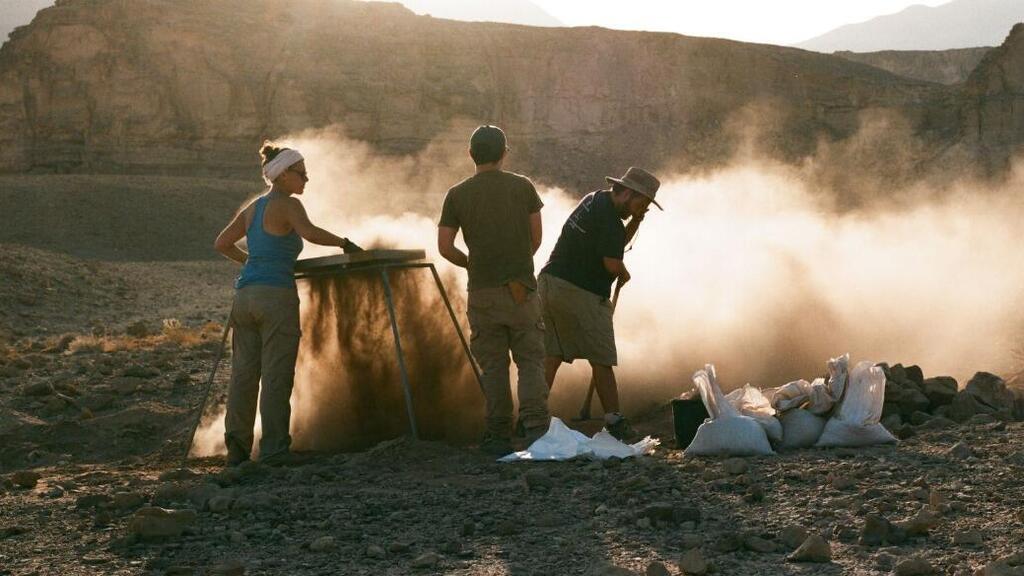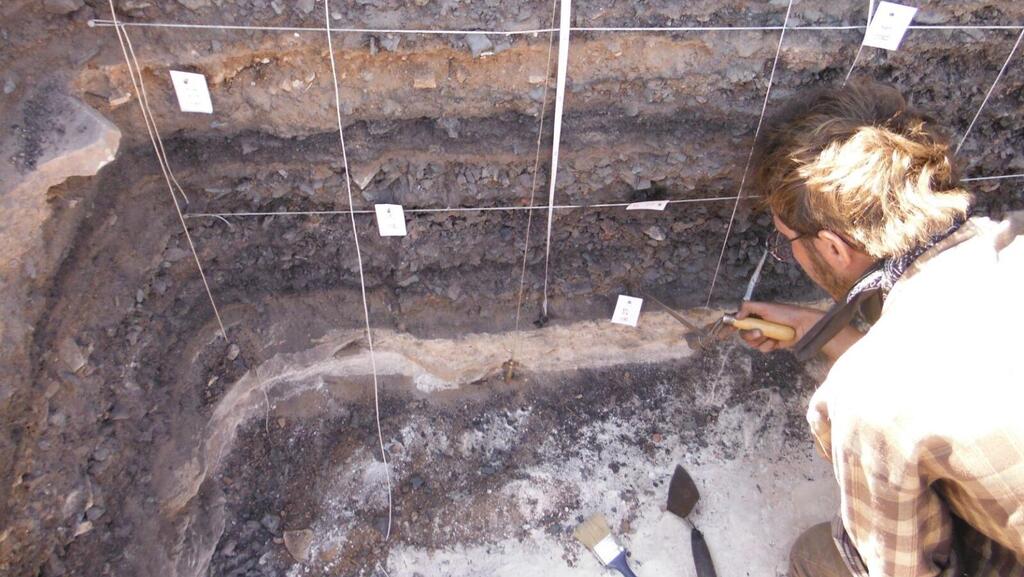A new publication from Israel's Tel Aviv University explains how 11th-ninth century BCE environmental exploitation has continued to affect the country's southern desert region.
Researchers, in a study conducted by Ph.D. student Mark Cavanagh, Prof. Erez Ben-Yosef, and Dr. Dafna Langgut, collected samples of charcoal from mines used as fuel for metallurgical furnaces in the Timna Valley, where the copper industry flourished for a period of about 250 years.
3 View gallery


Excavating Slaves’ Hill in Israel's Timna Valley
(Photo: Courtesy of Hai Ashkenazi, courtesy of the Central Timna Valley Project)
"In addition to thousands of copper mining sites, the area also has 10 industrial areas where copper was extracted from stone in fiery furnaces. The general public is familiar with the subject under the title "King Solomon's Mines", although the mines themselves are not mentioned in the Bible. However, we know that the peak of copper production does coincide with the days of David and Solomon's reign," Prof. Ben-Yosef said.
"The Bible says David conquered the Timna Valley, appointed commissioners to the area, and Solomon, his son, used enormous amounts of copper to construct the Temple in Jerusalem. temple. We can only assume that David took interest in the far desert region because of the copper treasures, a metal of great importance at the time, which was used to create bronze."
"The copper industry in Timna was operated by Edomites residents of the area who specialized in it, and the copper was sent to distant lands, including Egypt, Lebanon, and even Greece. The new research shows that the industry was not sustainable, a testament that fits it reveals the slavery of Edom during that time was by an external rule, perhaps Jerusalem," Prof. Ben-Yosef added.
According to the researchers, Timna's copper industry was highly advanced for its time, with copper being extracted from the ore via smelting in a process that took roughly eight hours.
3 View gallery


Investigating a pile of industrial waste mixed with charcoal
(Photo: Courtesy of Hai Ashkenazi, courtesy of the Central Timna Valley Project)
The wood charcoal used to reach the high temperatures needed for this process was manufactured beforehand at particular sites, done by slow combustion of trees and bushes that were cut down for this purpose.
"The copper industry at Timna was first discovered about 200 years ago, and ever since, every researcher who visited the area has asked the same question: What fuel was used to heat the smelting furnaces?" Cavanagh explained.
"Since vegetation is very sparse in this desert area, where did the firewood come from? To finally solve this mystery, we collected samples of charcoal from the smelting sites and examined them in the lab."
The researchers discovered that, while earlier samples of the fuel used contained mainly local white broom and acacia thorn trees, the quality of the firewood deteriorated over time. The later samples, well-preserved thanks to the desert climate, consisted of low-quality wood fuel and timber imported from afar.
This change, according to the study, was due to overexploitation that destroyed natural resources in the area - including high-quality firewood. Ben-Yosef noted one production site, named the "Slaves' Hill," burned as many as 400 acacias and 1,800 brooms yearly.
"As these resources dwindled, the industry looked for other solutions, as evidenced by the changing composition of the charcoal," Ben-Yosef stated.
However, transporting the wood from afar did not prove cost-effective, and eventually, the mines were shut down in the ninth century BCE.
"In essence, they destroyed the environment completely, resulting in the mines being shut down. Nowadays, we can still see it in the absence of some species of plants that were never recovered," Prof. Ben-Yosef concluded.


